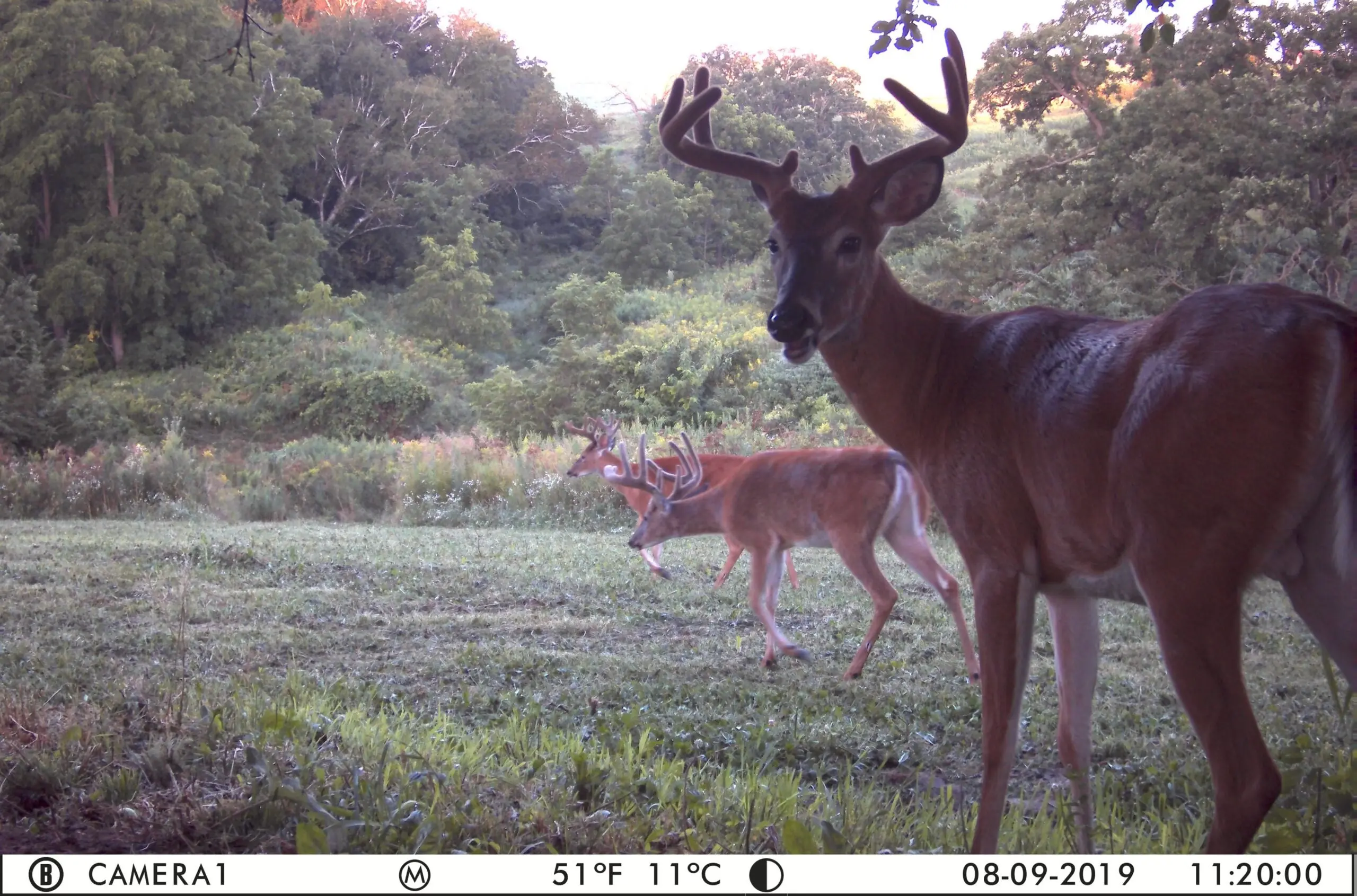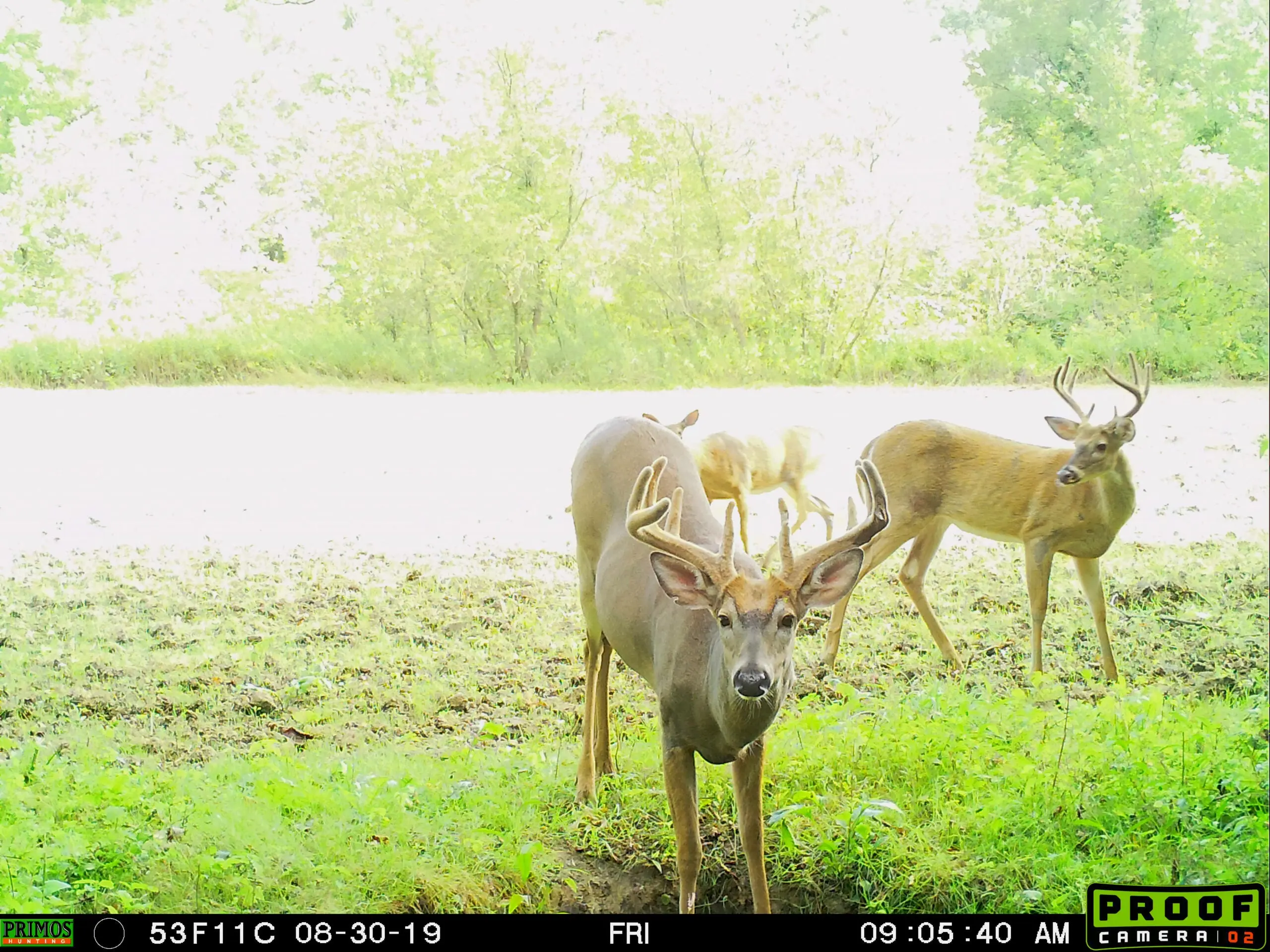Summer seems like easy living for whitetails, with it’s balmy weather and lush green growth. So, why would they need you to make a deer mineral lick for them? Well, because June, July, and August pose their own difficulties for deer. Does are raising and nursing fawns, and bucks are busy packing on body weight for the coming rut
, as well as putting any reserve energy into growing the big racks we hope to see during the hunting season. All that activity puts stress deer.
help deer overcome some of that stress, which is why whitetails (and other game) have long been attracted to naturally-occurring mineral sites in their range. Since these are relatively rare, hunters started providing deer mineral licks decades ago, and the practice has only grown since. These days, virtually any food plot company worth its salt (sorry) has added a mineral block
to its lineup. But you can make your own deer mineral lick for quite a bit less with just some hand tools, a little sweat, and mineral found at any farm supply store.
Yes, Deer Mineral Licks Are Worth Putting Out
Some hunter-managers dismiss the importance of minerals to whitetail health, and some of their points are valid. The best deer mineral lick in the world will not turn a doe into Super Mom, nor will it transform a middling 10-point into a B&C candidate. However, as mineral proponents will argue, a complete diet (which includes minerals) allows a whitetail to fully express its genetic potential.
Years of watching whitetails opting to eat this and not that (and vice-versa) have convinced me that deer are expert at finding exactly what their body needs at any given time, and the fact that whitetails are highly attracted to mineral sources this time of year is undeniable. As evidence, I have mineral sites that I started years ago that I no longer freshen with new material, and deer continue to return to them this time year, digging up dirt that contains traces of mineral placed long ago.

A bachelor group of bucks visit one of the author’s mineral sites in early August. Scott Bestul
But there’s another big reason to start a deer mineral lick. For hunters, there is simply no better spot to start gathering summer trail-cam pics
. Once established, a mineral site is so attractive that it will suck in virtually any buck in the area. If you’re serious about taking a summer inventory of bucks, a mineral lick will compete with and often outperform any food or water as a summer trail-cam site. So let’s get going. Here’s how to create a perfect mineral lick for summer deer, in six steps.
How to Make a Deer Mineral Lick, Step-By-Step
1. Check the regs on minerals.
Be careful. Some states prohibit mineral licks entirely, or regulate their use. Get a copy of your state’s regs and make sure placing mineral is legal in your area. If it is an acceptable practice, it may be regulated, so be sure to follow any restrictions outlined by your state agency. And don’t assume you already know the rules, because with the spread of CWD and other diseases, the rules may well have changed since you last checked.
2. Mix the minerals.
As noted, there are many commercial deer mineral mixes, blocks, and rocks
on the market, and I know many hunters and managers who swear by this brand or that. And I don’t dispute any of it. However, I am an inveterate cheapskate on a limited budget, and I’d rather spend my dollars on other hunting gear, so I make my own deer mineral licks. If you’re on the penny-pinching plan, or you just prefer to do things yourself, follow my lead and go to your local farm supply store and buy a couple bags of trace mineral salt.
This is what many cattlemen offer their stock, and, if you use nothing else, it will be more than enough to pull deer into your lick. That said, I like to take things a step further and also get bag of dicalcium phosphate (commonly known as di-cal). This is an additive some dairy farmers feed to their calves, so it contains some body-building elements that can take a simple trace mineral lick to the next level. I typically make a 60/40 mix of trace mineral/dical, in a 5-gallon bucket, using a spade to blend the ingredients. One bucket is usually enough to get a pair of licks going.
3. Pick a good trail-camera site for your mineral lick.

A nice 10-pointer poses for the the author’s trail camera at another of his mineral sites. Scott Bestul
Since I use licks as camera sites, I want to place them in areas where I can pull an SD card while making minimal disturbance to area bucks. For the most part, this means the edges of farm fields and food plots, which are perfect for two reasons: first, they typically prime summer food sources that are already drawing whitetails, and, second, they are situated in a place that lets me check cameras at midday without bumping deer. I focus on soybean or alfalfa fields in farm country, clover food plots anywhere, and the edges of fresh clearcuts or natural openings in the big woods. Obviously, the closer you put the mineral lick to entry trails, field-edge corners, or other areas with good deer sign, the better the chance that it will attract attention.
4. Dig a hole and add the mineral mix.
Creating a deer mineral lick couldn’t be easier. Pick a good tree for hanging a camera on the edge of the aforementioned food sources. Step off 10 or 15 yards, and stick a shovel in the dirt and spade up the earth in a 2-foot circle. Toss a gallon or so of your mix into the dirt, then use your shovel to mix it into the earth. After that, spread another gallon or a little more of the mix on top to serve as a visual attractant to lure deer to the spot. Use the rest of your 5-gallon pail to create a second lick at a similar site, 400 to 800 yards away. Oh, and if your mineral lick is adjacent to a farm field, make sure it’s well off the field edge, as deer can really dig out and enlarge a lick over time, and you don’t want the landowner upset because you created a crater on his field edge.
5. Hang a trail camera near the mineral lick.
As noted, mineral licks are the best spot to gather preseason pics, and I rarely start a lick without considering where and how I’ll hang a camera. Ideally, I want a tree or fence post to be about 10 yards from the lick and sometimes a bit more; remember, deer will be spending some time at the site and a flash (even an infrared or no-glow) going off in their face at every visit can make even the most mellow buck a little goosey. If I feel like the camera itself is exposed, I’ll brush it in by sticking a leafy branch or two behind it. I like to visit the camera and pull the card after only several days at first, so I can view pics and make sure I’ve positioned the camera properly. Most cameras allow you to set the number of shots it will take for every triggering event, and it’s worth considering bumping the number down; I’ve had does and fawns linger at a lick for 20 minutes or more, which adds up to dozens of pics of the same deer.
6. Repeat if necessary.
Creating a lick doesn’t guarantee deer will use it. I’ve had licks that lit up with deer activity immediately, while others were almost ignored. I believe the mineral just reacts to some soil types better than others, but this is just speculation. Regardless, it’s a good idea to revisit any startup licks to see if deer are enjoying them. If there’s little to no activity, create another lick nearby to see if that one takes. Eventually, some are sure to—and you’ll be set up to start getting summer pics of your best bucks.






